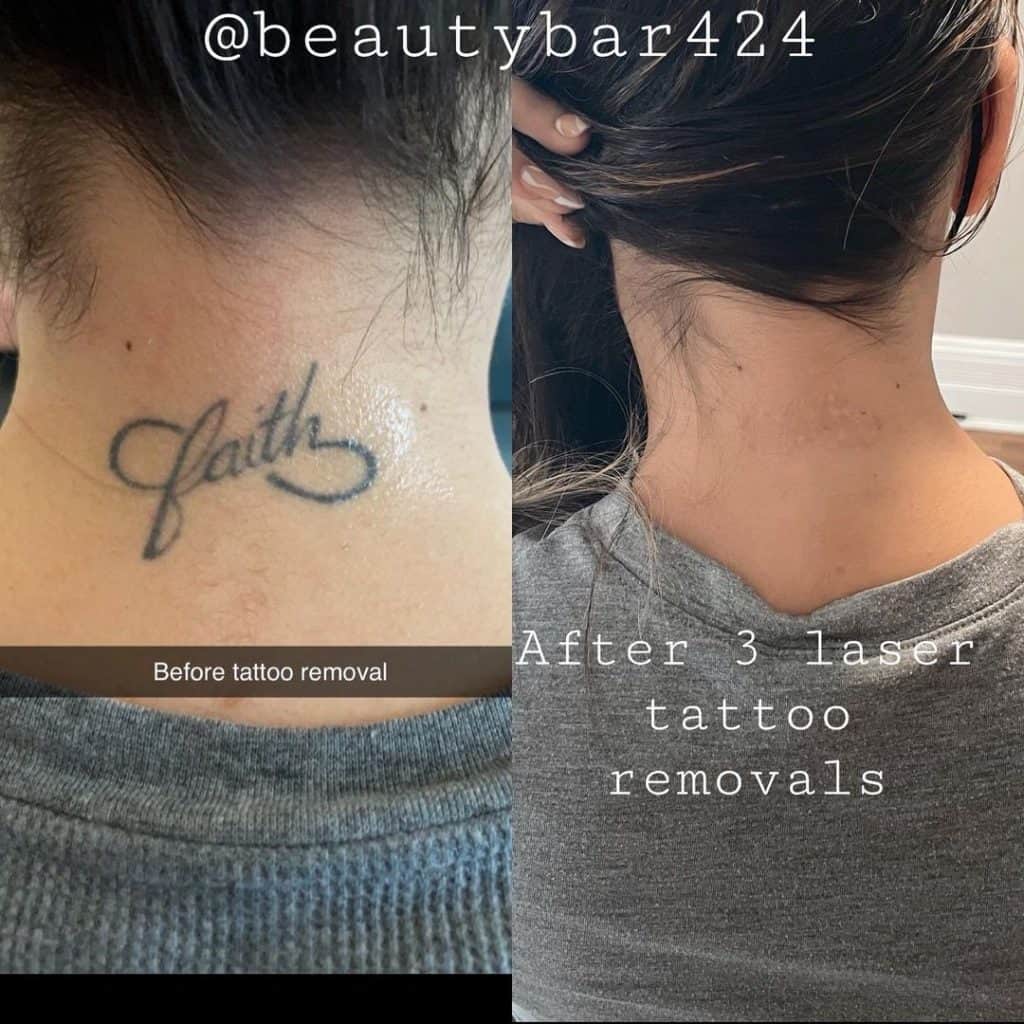
Okay, so you’re thinking about getting a tattoo removed from your hand?
I get it.
Maybe that impulse decision from spring break isn’t vibing anymore.
Or your ex’s name feels a little…awkward.
The big question swirling in your head is probably: Do tattoo removals leave scars on hands?
Let’s dive into that.
Tattoo Removal on Hands: The Real Deal
First things first, let’s be honest.
Anytime you mess with your skin, there’s a chance of scarring.
Think about it like this: getting a tattoo involves injecting ink into your skin.
Removing it means breaking up that ink and letting your body flush it out.
That process can be tough on your skin.
So, Will You Scar?
Not necessarily.
The good news is that technology has come a long way.
But let’s break down the factors that influence scarring after tattoo removal on your hands:
- The Type of Laser: Not all lasers are created equal. Picosecond lasers are generally considered safer and more effective than older Q-switched lasers. They break down the ink into smaller particles, making it easier for your body to eliminate.
- Your Skin Type: People with darker skin tones are generally more prone to scarring because their skin produces more melanin. This can interfere with the laser and increase the risk of hyperpigmentation (darkening of the skin) or hypopigmentation (lightening of the skin).
- The Tattoo’s Ink: Some inks are harder to remove than others. Black ink is usually the easiest. Colorful inks, especially greens, blues, and yellows, can be more stubborn and require more treatments, increasing the risk of scarring.
- The Tattoo’s Age and Size: Older tattoos are often easier to remove than newer ones because the ink has already started to fade. Smaller tattoos are also easier to treat than larger ones.
- Your Aftercare: This is HUGE. Proper aftercare is essential for minimizing the risk of scarring.
Aftercare is Key: Your Scar-Fighting Arsenal
Seriously, don’t skimp on this.
I’ve seen people get amazing results with laser tattoo removal, only to mess it up with poor aftercare.
Here’s what you need to do:
- Keep it Clean: Gently wash the treated area with mild soap and water.
- Apply Ointment: Use a healing ointment like Aquaphor or Vaseline to keep the skin moisturized.
- Cover it Up: Protect the area with a bandage or sterile dressing, especially during the first few days.
- Avoid Sun Exposure: This is a big one! The sun can damage the treated skin and increase the risk of hyperpigmentation. Wear sunscreen with a high SPF, even on cloudy days.
- Don’t Pick or Scratch: I know it’s tempting, but resist the urge to pick at scabs. This can lead to scarring.
- Follow Your Technician’s Instructions: They know what they’re doing. Listen to their advice!
Example: I had a friend, let’s call her Sarah, who got a small tattoo removed from her wrist. She followed all the aftercare instructions religiously, and you can’t even tell she ever had a tattoo there. On the other hand, I know someone else who picked at their scabs and ended up with a noticeable scar.
Choosing the Right Technician: It Matters
Don’t just go to the cheapest place you can find.
Do your research.
Look for a qualified and experienced technician who uses advanced laser technology.
Ask questions about their experience, the type of laser they use, and their aftercare recommendations.
A good technician will assess your skin type, the tattoo’s ink, and other factors to determine the best course of treatment.
What About Scar Removal Options?
Okay, so let’s say you do end up with a scar. Don’t panic.
There are options available to minimize its appearance.
- Topical Creams: Over-the-counter scar creams can help to fade scars over time.
- Silicone Sheets: These can help to flatten and soften scars.
- Laser Resurfacing: This can help to improve the texture and appearance of scars.
- Microneedling: This can stimulate collagen production and help to reduce the appearance of scars.
FAQ: Your Burning Questions Answered
- How many sessions will it take to remove my hand tattoo? It depends on the tattoo’s size, ink, and your skin type. Most people need several sessions, spaced several weeks apart.
- Does tattoo removal hurt? It can be uncomfortable, but most people tolerate it well. Your technician can use a topical anesthetic to numb the area.
- How much does tattoo removal cost? The cost varies depending on the size of the tattoo, the number of sessions required, and the location of the clinic.
- Can I remove a tattoo at home? No! Please don’t try this. Home tattoo removal kits are often ineffective and can be dangerous.
The Bottom Line
While there’s always a risk of scarring with any type of tattoo removal, choosing a qualified technician, using advanced laser technology, and following proper aftercare instructions can significantly minimize that risk. Remember, asking yourself, "Do tattoo removals leave scars on hands?" is a valid concern, but with the right approach, you can achieve successful tattoo removal with minimal scarring.
Leave a Reply